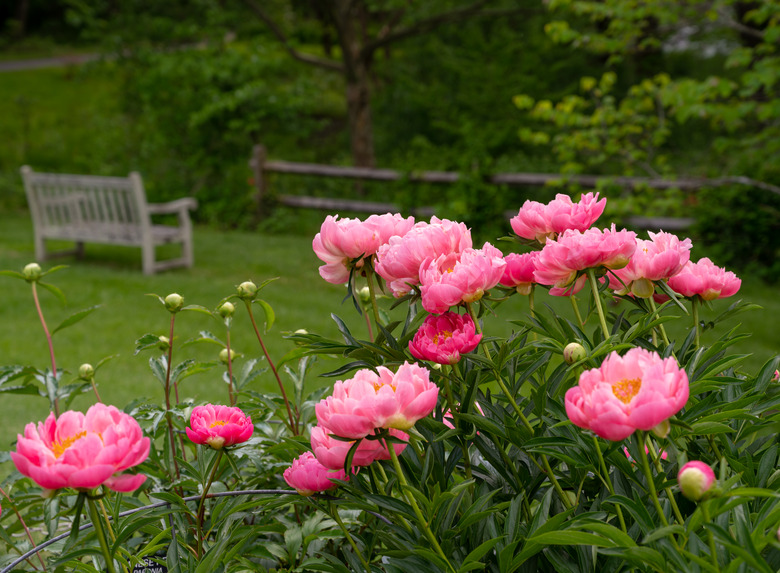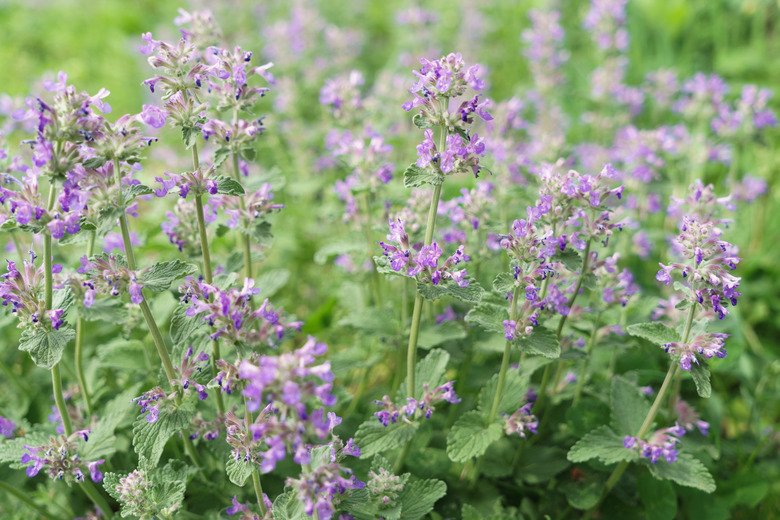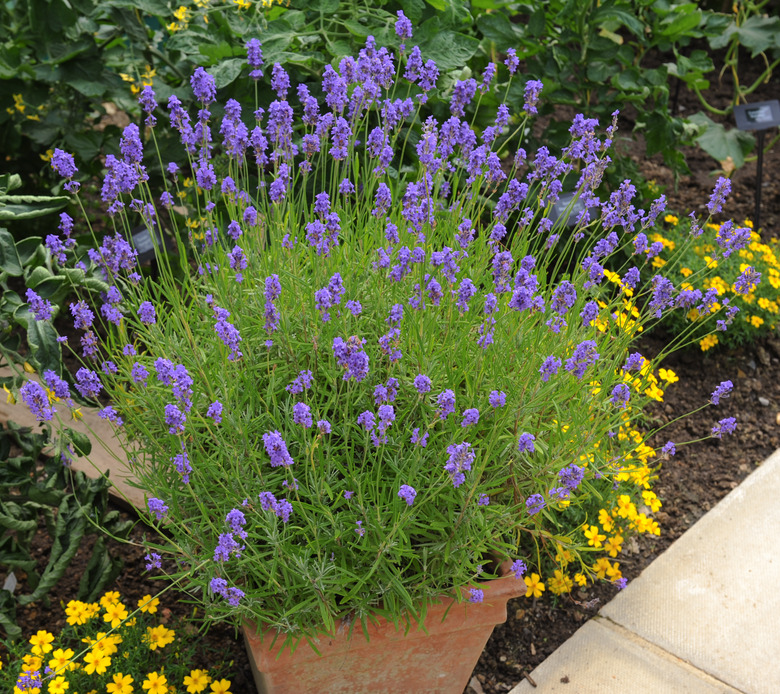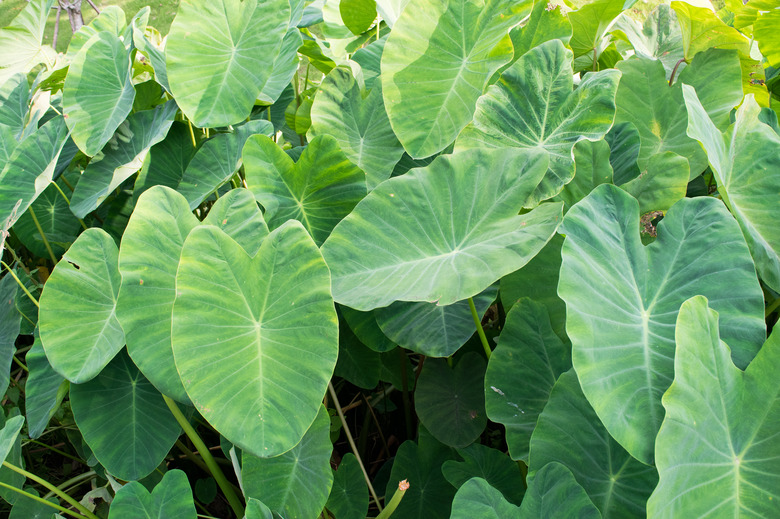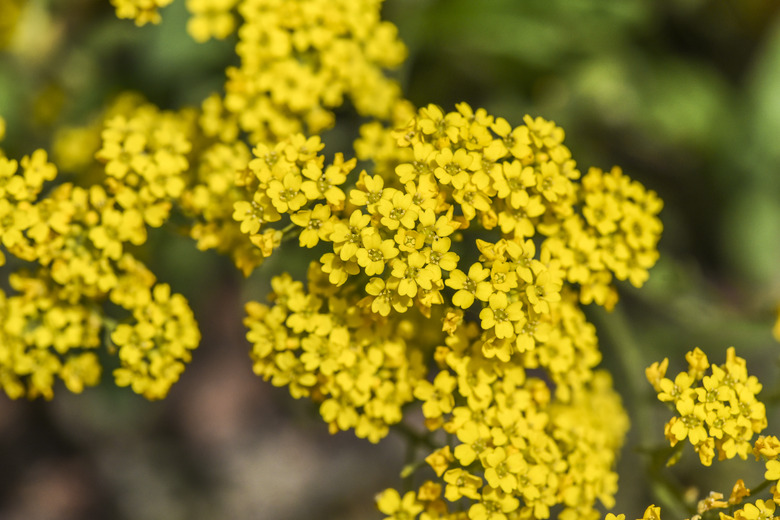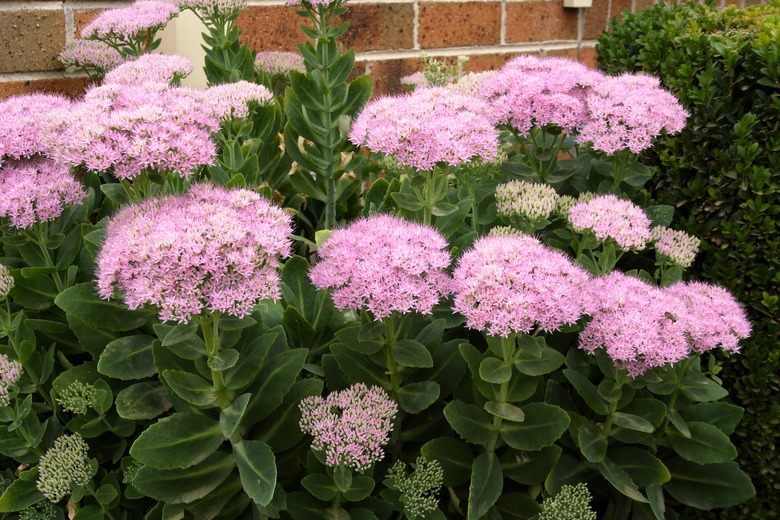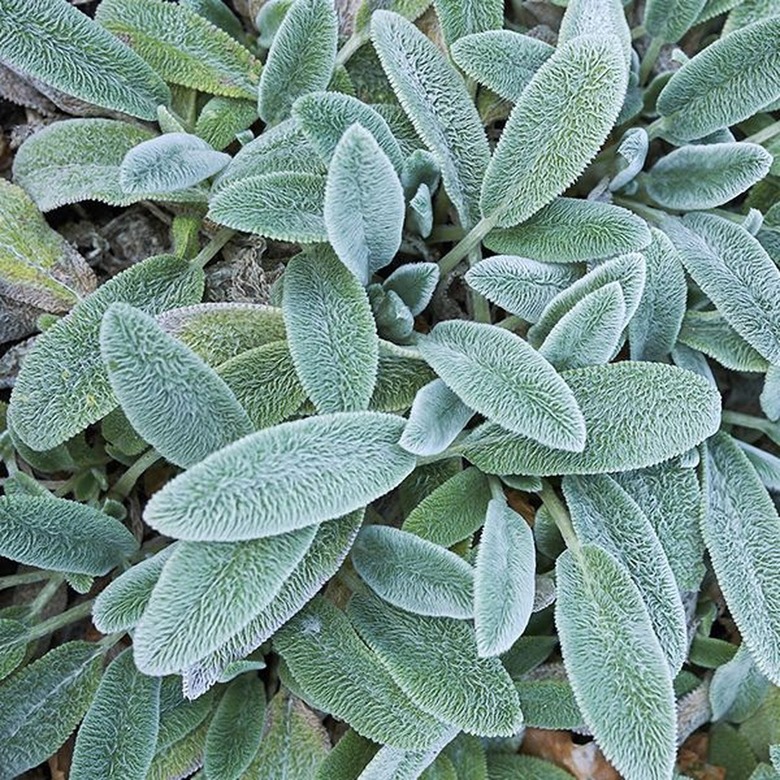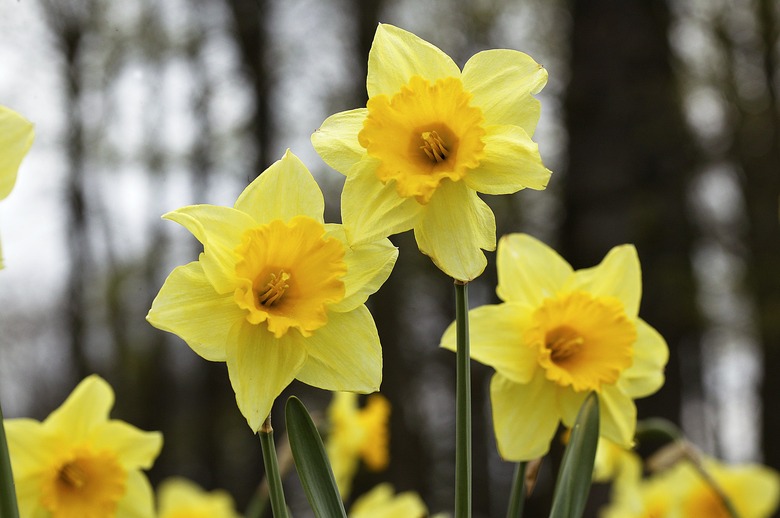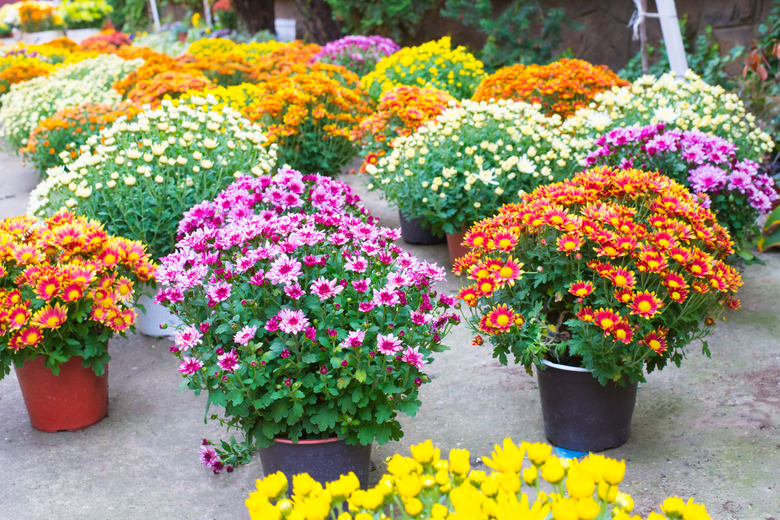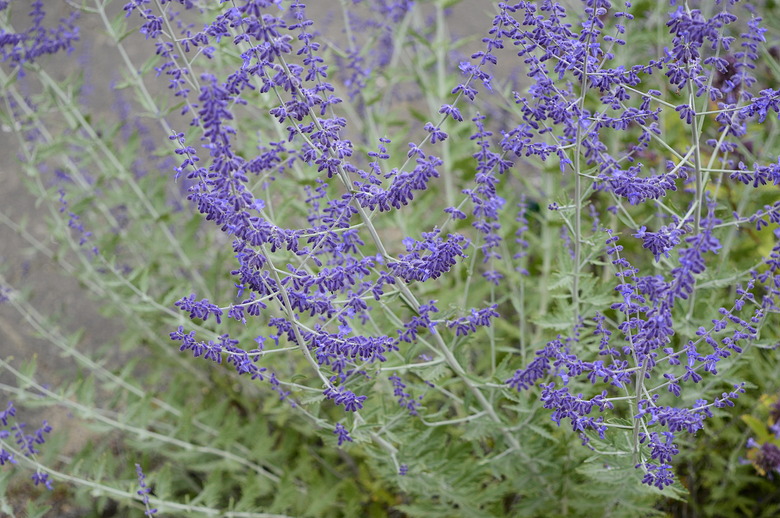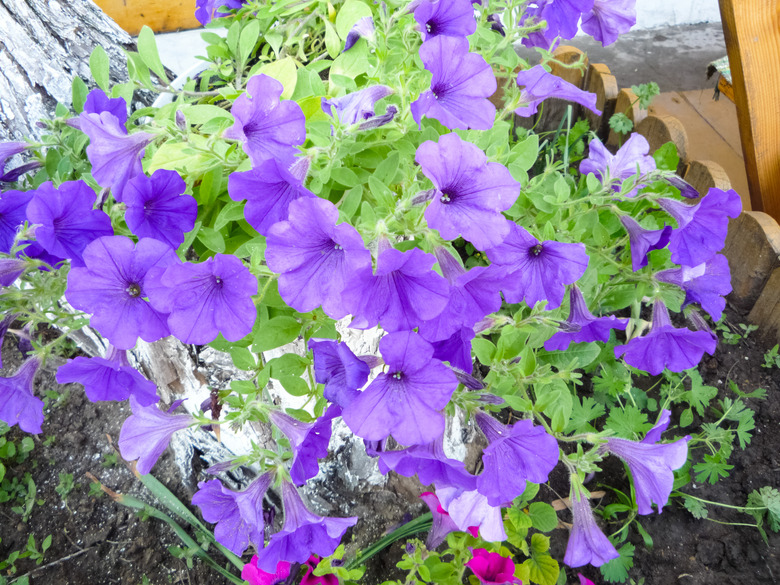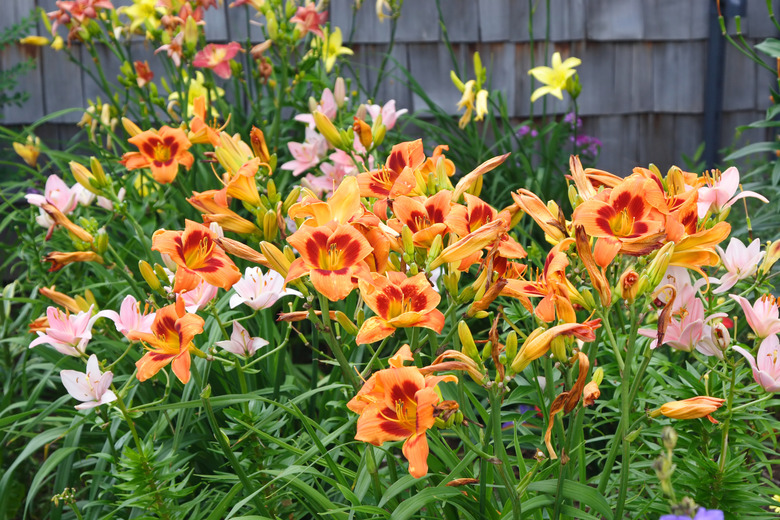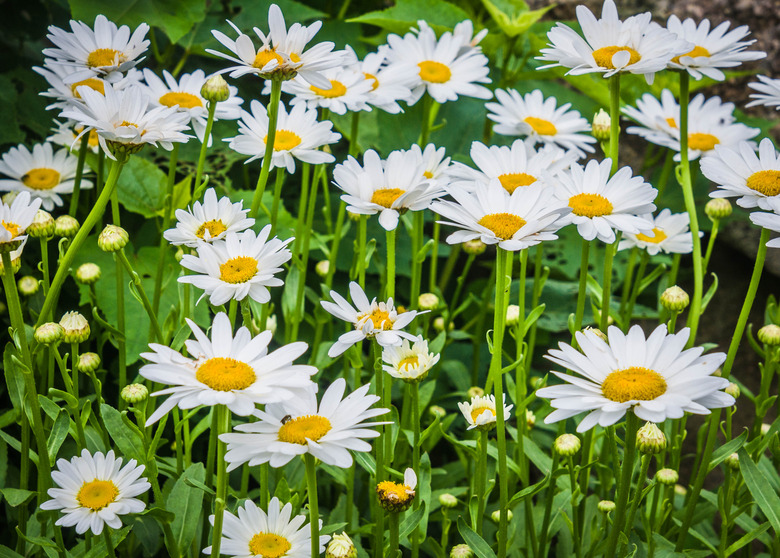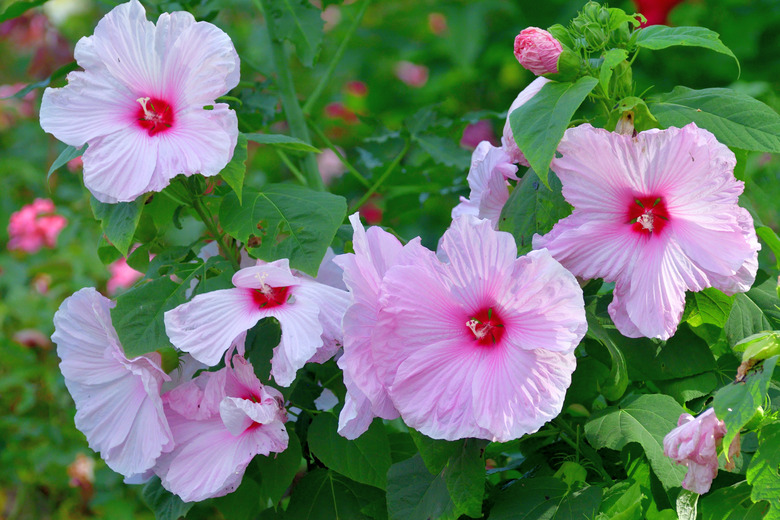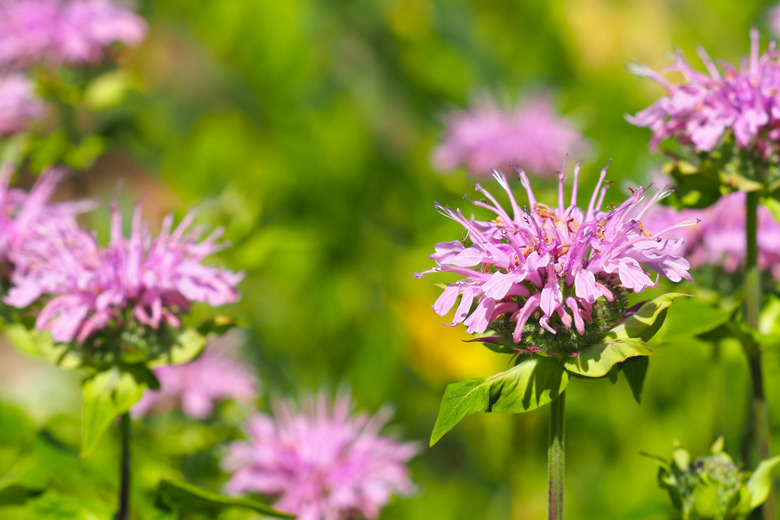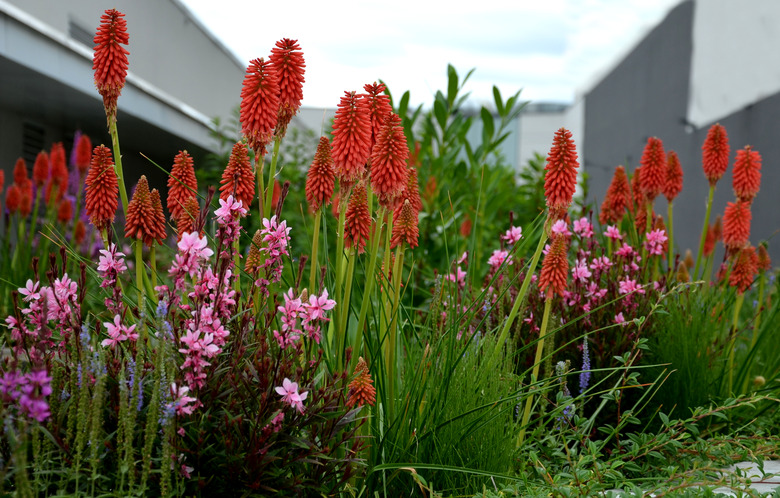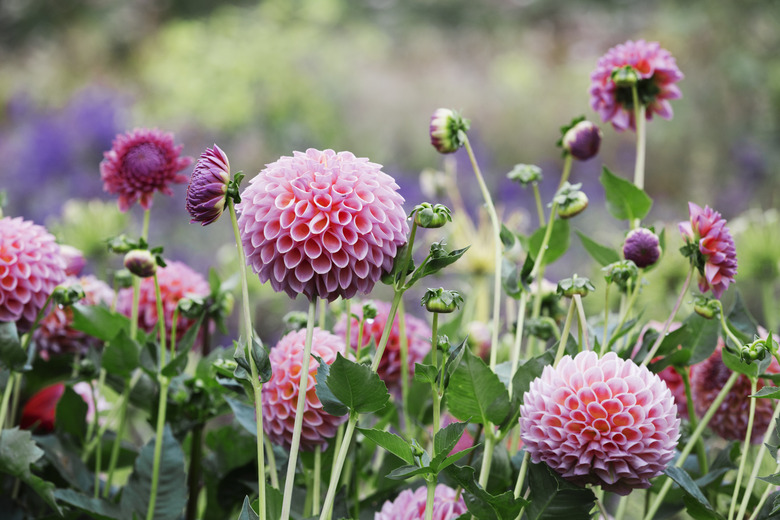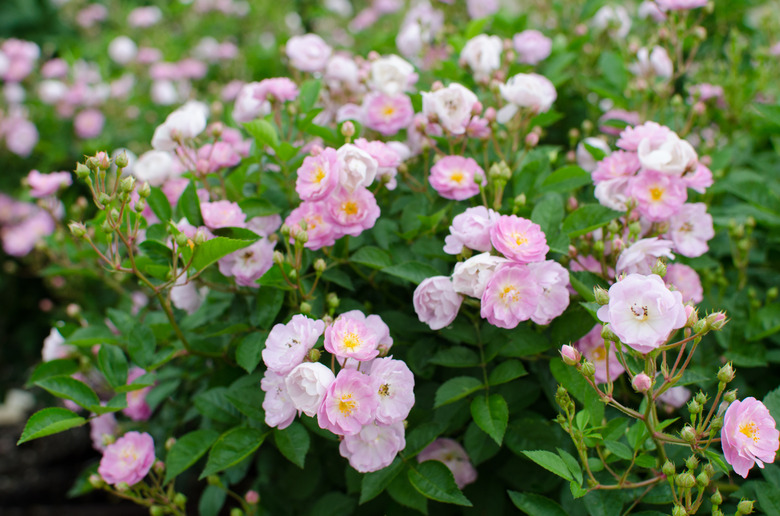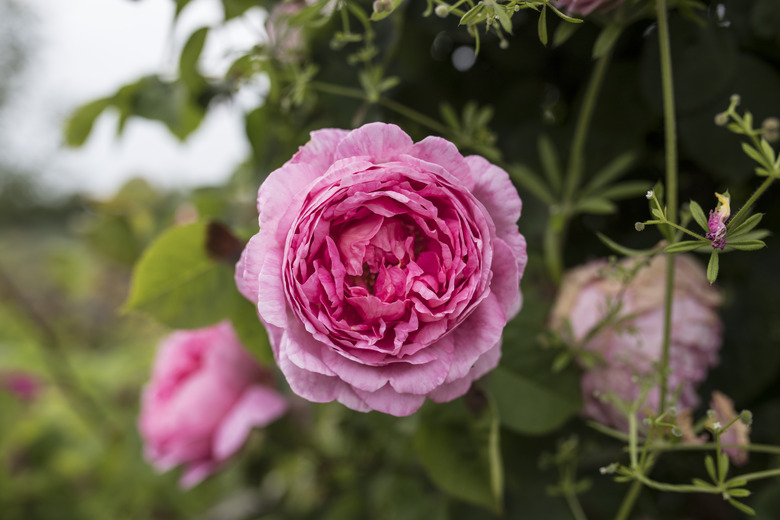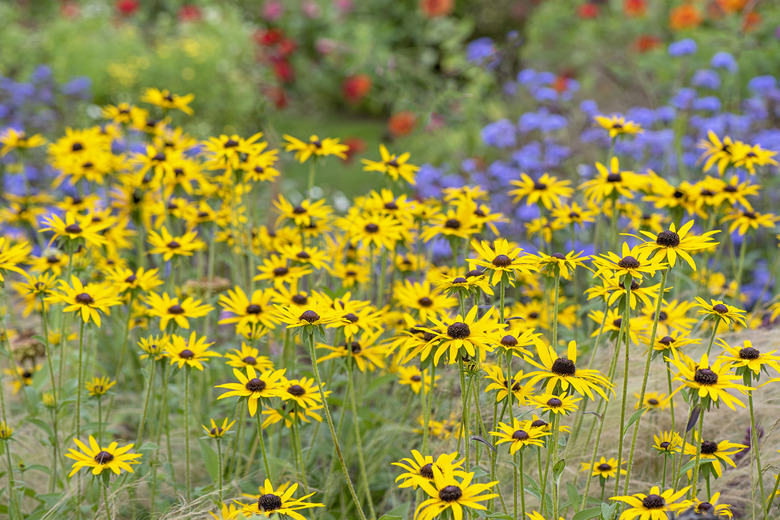Full-Sun Plants: 20 Perennials For A Year-Round Garden
We may receive a commission on purchases made from links.
If your garden is full of sunlight, you can't do better than full-sun perennials to provide low-maintenance loveliness. Calling plants "full sun" doesn't mean they need 24 or even 12 hours of sunlight a day; rather, they need somewhere between six and eight. Unlike annuals that live for only one year, perennials live at least two years and often much longer. If you are seeking sun-loving perennials for a year-round garden, check out this shortlist for some of our favorites.
1. Catnip
1. Catnip
Catnip (Nepeta cataria) is an easy-to-grow herb in the catmint family that is native to Eurasia. It grows to 4 feet tall with a rangy habit. The heart-shaped, feathery foliage is light green, and small white and purple flower spikes appear in densely crowded whorls during the growing season. The nectar-rich flowers attract all types of bees, wasps, and butterflies. Some cats are strongly attracted to catnip as well, and making a cat happy is the primary reason it is planted.
Site catnip in full sun in well-drained soil that is loamy or sandy. Catnip thrives in U.S. Department of Agriculture plant hardiness zones 3 through 9.
2. English Lavender
2. English Lavender
English lavender (Lavandula angustifolia) is a beautiful, bushy ornamental with an unforgettable fragrance. Native to the Mediterranean, lavender naturally loves a sun-drenched orientation and soil with excellent drainage. It grows happily in any soil from poor to moderate. The silvery foliage stays green all year and contrasts well with the brilliant lavender blossom spikes that attract pollinators to the garden.
English lavender is a sun-loving plant that thrives in USDA zones 5 through 10 depending on the cultivar. It makes a great focal point in front of a home or as a houseplant, but it also can be used to hide leggy growth of other plants. Cut lavender blooms make a lovely sachet that is said to cure insomnia. Lavender leaves are edible and can be used in cooking.
3. Taro
3. Taro
If you don't know the plant called taro (Colocasia spp.), you may have been introduced to it under its other common name: elephant ears. These tropical plants with huge, magnificent leaves are tuberous, frost-tender perennials from tropical Asia. They have drama to spare since the "elephant ear" leaves can grow to 3 feet long atop tall stems. The leaf color varies from lime to near black, and they are sufficiently stunning to make up for a lack of flowers. In most of the country, taro is grown for the visual impact, but in Hawaii and southeast Asia, it is a food crop used to make poi.
Plant taro in a wind-protected location with compost-enriched, moist soil. The plants grow from tubers, and in USDA zones 7 through 11, they are perennials that can be left out all year. In chillier zones, the tubers can be dug up and brought inside for the winter.
4. Yellow Alyssum
4. Yellow Alyssum
Here's an enchanting, mounding perennial with a wealth of common names. Yellow alyssum (Aurinia saxatilis) is also called basket-of-gold, gold dust, golden tuft, and rock madwort. It is a low-growing evergreen (6 to 8 inches tall) with a wealth of golden-yellow flowers lighting up your garden for six weeks in springtime. Growing fast from seed, alyssum is glorious in rock gardens and cascades merrily down rock walls. It also makes a stunning ground cover.
Plant yellow alyssum in a full-sun location in dry, sandy soil with good drainage. It thrives in USDA zones 3 through 7 and is a favorite of bees.
5. Salvia
5. Salvia
The slender, trumpet-shaped flowers of perennial salvia (Salvia spp.) seem custom made for the beaks of hummingbirds. They are found in many bright colors and make excellent cut flowers. These full-sun plants, also called sage, are members of the mint family and are extremely easy to grow. The soft, velvety foliage smells just as good as the flowers.
Plant salvia in a full-sun location in well-draining garden beds. It is long-blooming and will thrive all year long in USDA zones 5 through 10 depending on the species and cultivar, attracting butterflies and bees as well as hummingbirds. Keep your eye on this shrub since it can spread quickly.
6. Autumn Joy Sedum
6. Autumn Joy Sedum
Sedum (Sedum and Hylotelephium spp.), also known as stonecrop, is a succulent — a heat-tolerant perennial plant with thick leaves used to store water for times of drought. There are many varieties of sedum, which are all easy to grow, tough little plants that attract pollinators to their amazing flowers. The upright varieties of sedum, like Autumn Joy (Hylotelephium 'Herbstfreude' AUTUMN JOY, formerly Sedum spectabile) form tall stems topped by a compact quilt of tiny, bright flowers. These sedum are perfect for borders or pollinator gardens.
Plant Autumn Joy and similar upright stonecrops in well-drained soil in USDA zones 3 through 10. It forms a blue-green clump of thick stems that are 2 feet tall. Clustered buds appear on top and open into raspberry-colored flowers, which are extremely ornamental and also attractive to pollinators.
7. Lamb’s Ear
7. Lamb's Ear
This cute common name refers to a herbaceous perennial, Stachys byzantina, with super-soft, velvety green foliage that are a delight to touch. The silver-gray leaves rapidly form a spreading evergreen ground cover some 12 to 18 inches tall that emits a pleasant fragrance when crushed. Small purple flowers appear in summer, attracting butterflies and other pollinators.
Lamb's ear loves a full-sun location and well-draining soil. Shallow or rocky soil works well for this perennial. The plant thrives in USDA zones 4 through 9.
8. Daffodil
8. Daffodil
Who isn't delighted to see the golden heads of daffodils (Narcissus spp.) in spring? The traditional daffodil blossom is a showy yellow with six petals and a trumpet-shaped center, but there are many cultivars with different flower shapes and colors.
Perhaps America's favorite spring bulb plant, daffodils thrive in USDA zones 3 through 9 depending on species and cultivar on sites with full sun and excellent drainage. Hardy and easy to grow, these perennials do best in moderately fertile, loamy soil. Daffodils are extremely appealing planted in a large drift in a woodland garden.
9. Chrysanthemum
9. Chrysanthemum
Better known as garden "mums," chrysanthemums (Chrysanthemum x morifolium, formerly Dendranthema x grandiflorum) light up the garden in autumn with their jewel tones in deep shades of orange, red, purple, and pink flowers, each one made up of hundreds of tiny florets. These sun-loving perennials usually grow between 1 and 3 feet tall and wide, with flowers ranging from small to enormous.
Mums thrive in USDA zones 4 through 9 depending on the cultivar, and they prefer loamy soil. They are grown as fall ornamentals for their bright and attractive flowers.
10. Russian Sage
10. Russian Sage
Russian sage (Salvia yangii, formerly Perovskia atriplicifolia) is a shrubby perennial with appealing gray-green leaves and long stems that fill with a cloud of tiny, purple-blue flowers in late summer. The blossoms appear in whorls along the silvery-gray stems. It looks a little like lavender but is more cold hardy, growing in USDA zones 3 through 9.
The species plant grows 4 feet tall and keeps those airy lavender flowers coming all summer long. The open habit of the shrub and its silvery foliage give a Mediterranean feel to the backyard, and the flowers attract bees and other pollinators. Russian sage makes a great specimen plant in a small garden, but you'll get more intense color if you plant them in large groupings.
11. Bellflower
11. Bellflower
Clustered bellflowers (Campanula glomerata) are herbaceous, clumping perennial flowers that grow best in full sun in medium-moisture, well-drained soil. This showy plant produces densely packed clusters of pale blue blossoms. Bellflowers can be invasive, so consider planting in container borders, mass plantings, or as ground cover.
These perennials thrive in USDA zones 3 through 8, adding a pop of color to the garden from the middle of summer through fall. They grow to 2 feet tall and establish by rhizomes.
12. Daylily
12. Daylily
Daylilies (Hemerocallis spp.) are not related to true lilies although their flowers have the same elegant shape. These are as close to no-maintenance perennials as you are likely to find and thrive in a full-sun location with well-drained, fertile soil. Daylily flowers form on leafless stems that rise above the crown of leaves. Though each flower lasts for one day only, a single stem produces up to 15 buds, giving the daylily a long bloom period.
Daylilies thrive in USDA zones 3 through 9 depending on the species and cultivar and can be found with flowers in a wide variety of hues. The blossoms appeal to butterflies and are introduced into the garden as ornamentals. Some can grow to 6 feet tall.
13. Shasta Daisies
13. Shasta Daisies
The lovely white flowers of Shasta daisies (Leucanthemum x superbum) are bigger, more robust versions of the daisies you'll see by the side of the highway. They are classic perennials, coming back every spring and blooming through fall. They grow fast and furiously in any type of soil in USDA zones 4 through 9.
Shasta daisies form clumps of foliage up to 3 feet tall and 2 feet wide that produce daisies with pure white petals around central yellow discs. They work well in a border or in the cutting garden. Shasta daisies make great cut flowers, lasting up to a week in a vase.
14. Rose Mallow
14. Rose Mallow
Rose mallow (Hibiscus moscheutos) is a hardy, perennial hibiscus with a long bloom season — July through September. Blossoms are showy and huge — the size of dinner plates — and may be white or pink. Each rose mallow flower lives only a few days, but more open in rapid succession.
The plants are vigorous, growing to 7 feet tall and 4 feet wide. They are easily grown in average soil in a full-sun location but do best in moist, organically rich soils. They thrive in USDA zones 5 through 9 and work well as specimens or in borders.
15. Bee Balm
15. Bee Balm
This full-sun perennial plant is beloved by pollinators. Bee balm (Monarda spp.) offers gorgeous blossoms of red, pink, purple, or white that attract hummingbirds, butterflies, and bees. Birds appear for the seed heads in winter. Since the shrubs can get to 4 feet tall, they make great background plants for the pollinator garden.
The fragrant foliage combined with the showy flowers makes bee balm very appealing to humans as well. Plant bee balm in a full-sun location in loamy soil in USDA zones 3 through 9 depending on the species and cultivar.
16. Red Hot Poker
16. Red Hot Poker
Anyone seeking a stunning plant to light up a sunny flower border should consider the red hot poker plant (Kniphofia spp.) These are exceptional specimens in the garden, with their clump of sword-shaped leaves surrounding flower stalks up to 5 feet tall. The stalks are topped by tube-shaped flower clusters in fiery shades from spring through early summer.
Grow these impressive perennials in USDA zones 6 though 10. They attract bees and butterflies and make fine cut flowers.
17. Dahlia
17. Dahlia
This sun-loving perennial will fill your garden with bright, beautiful flowers from midsummer through autumn. Dahlia (Dahlia spp.) is a genus of flowering plants that grow from tubers. There are about 60,000 named varieties of dahlias. You can find anything from tiny pompom flowers the size of lollipops to enormous, 15-inch blossoms in a wide range of colors. Many species grow to 5 feet tall.
Dahlias love a sunny spot and thrive as perennials in USDA zones 7 though 10. They prefer morning sun and rich, well-drained, slightly acidic soil.
18. Polyantha Roses
18. Polyantha Roses
Polyantha roses (Rosa multiflora 'Grandiflora,' formerly Rosa polyantha 'Grandiflora') are typically small and compact plants beloved for the generous clusters of brightly colored roses that bloom and rebloom all season long. They are also called "old roses" and work very well as container garden plants and in borders, low hedges, and corner spaces.
You'll find a vast selection of varieties and cultivars. Many are dwarf flowering shrubs, usually topping out at 4 feet tall, but some are climbing. The color range of flowers is astonishing, and hardiness zones range from 5 through 10. These roses will grow in most soils, even poor soils if well drained, but they prefer moist, fertile soil rich in humus.
19. Peony
19. Peony
Most flowers are appealing, but magical peonies (Paeonia spp.) are in a class of their own. The lush blossoms have been called scrumptious, gorgeous, and outrageously beautiful, and so they are, some with intoxicating fragrance. There are six flower types including single, semidouble, and double and a wide range of hues. These plants bloom from late spring to early summer and grow as perennials in USDA zones 3 through 8 depending on cultivar. All they ask for is full sun and loamy, well-draining soil.
Peonies are easy to use in the garden. Line them up along garden paths or put them in mixed borders. They also make stunning low hedges since the glossy clump of foliage lasts all summer long and then offers a brilliant fall display.
20. Black-Eyed Susan
20. Black-Eyed Susan
For easy-care golden beauty, invite the North American native black-eyed Susan (Rudbeckia hirta) into your perennial garden. The daisylike blossoms are yellow or red with a dark center, which explains the "black eye" in their common name. These vigorous plants grow to over 3 feet tall with large leaves and flowers 2 to 3 inches across, blooming from June through October. They are a magnet for pollinator insects.
Plant black-eyed Susans as perennials in USDA zones 3 through 9 in moist, moderately fertile soil that offers good drainage. They can be used in borders but also look good in containers.
References
- Country Living: 25 Full-Sun Perennials That Thrive in a Garden With Lots of Light
- University of Wisconsin Madison Division of Extension: Catnip, Nepeta cataria
- The Old Farmer's Almanac: Growing Lavender
- The Old Farmer's Almanac: Growing Elephant Ears
- Bluestone Perennials: Aurinia Summit™ Golden Yellow
- The Old Farmer's Almanac: Growing Salvia
- The Old Farmer's Almanac: Growing Sedum
- NC State Extension: Stachys byzantina
- The Old Farmer's Almanac: Growing Daffodils
- The Old Farmer's Almanac: Growing Chrysanthemums
- University of Wisconsin-Madison Division of Extension: Russian sage, Perovskia atriplicifolia
- NC State Extension: Campanula glomerata
- The Old Farmer's Almanac: Growing Daylilies
- The Old Farmer's Almanac: Growing Shasta Daisies
- Missouri Botanical Garden: Hibiscus moscheutos
- The Old Farmer's Almanac: Growing Bee Balm
- American Meadows: How to Grow Red Hot Poker
- American Meadows: Red Hot Poker Alcazar
- The Old Farmer's Almanac: Growing Dahlias
- Midwest Gardening: Polyantha Roses
- Dave's Garden: Polyantha Roses: Tough and Easy Beauties
- Gardeners HQ: How to Grow Polyantha Roses in Your Garden
- The Old Farmer's Almanac: Growing Peonies
